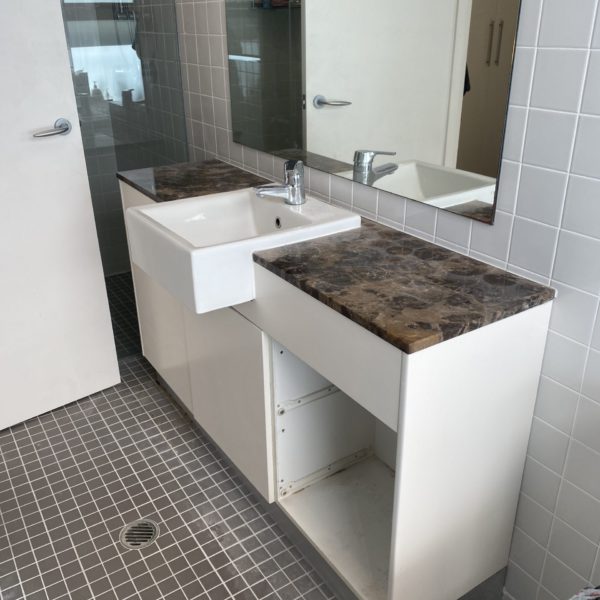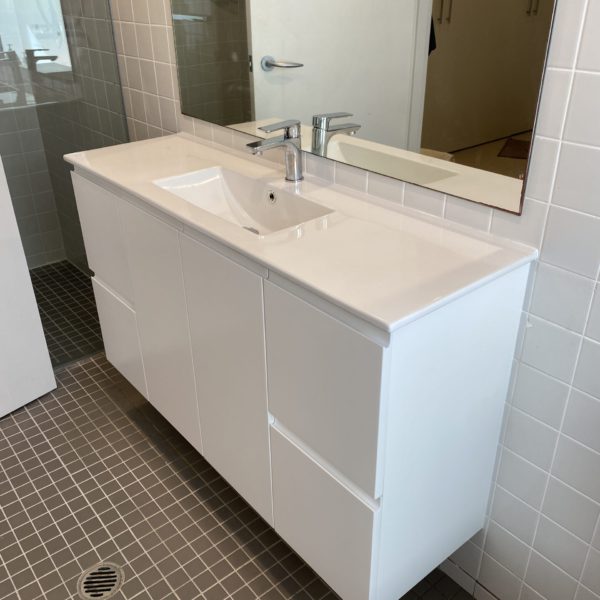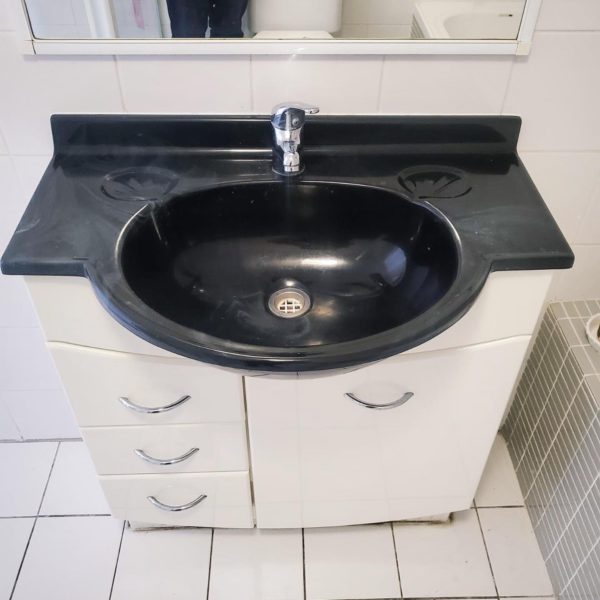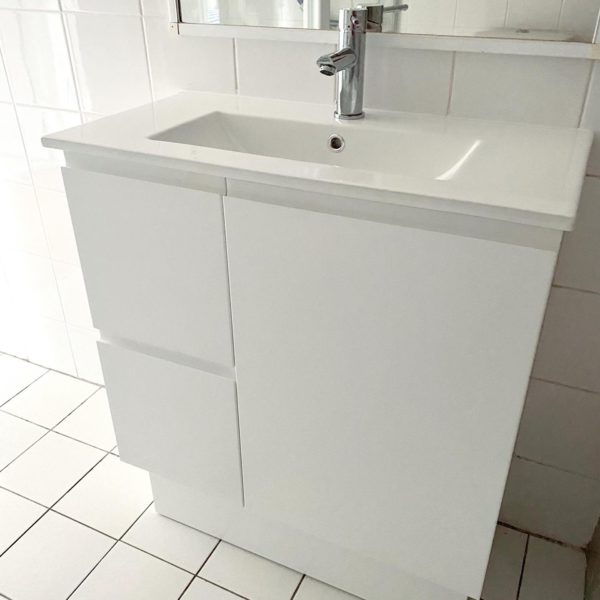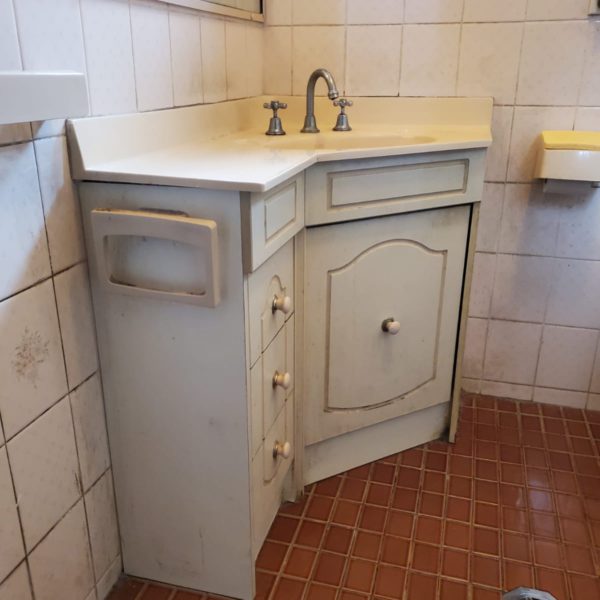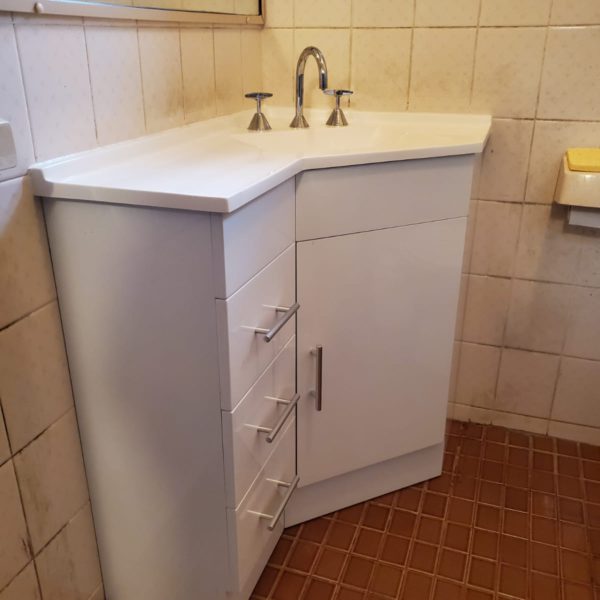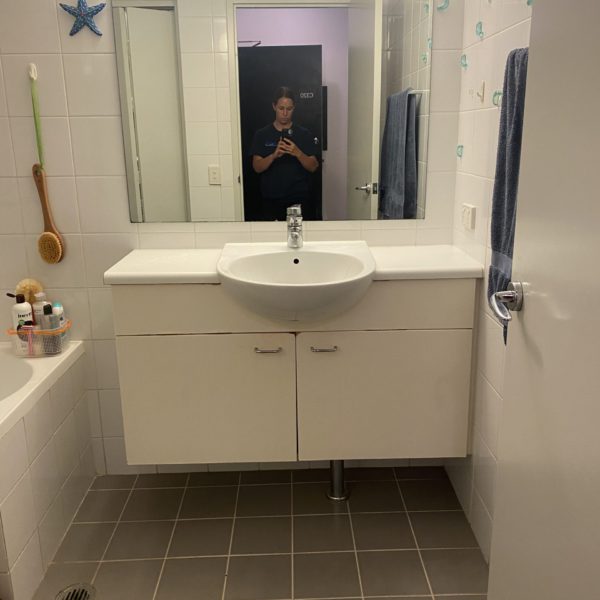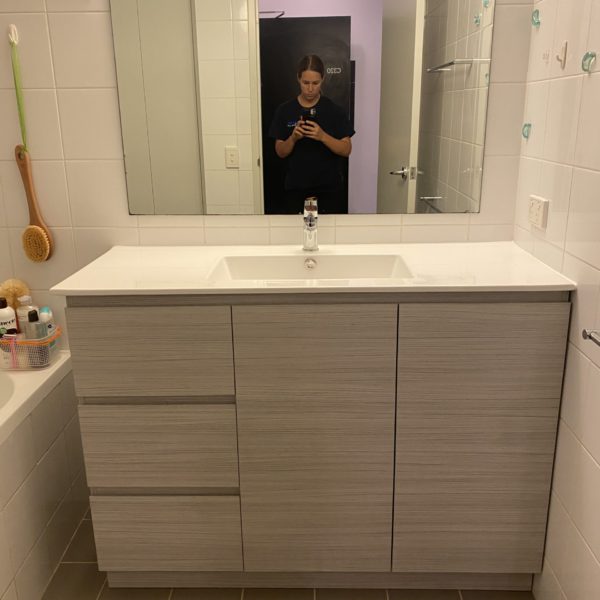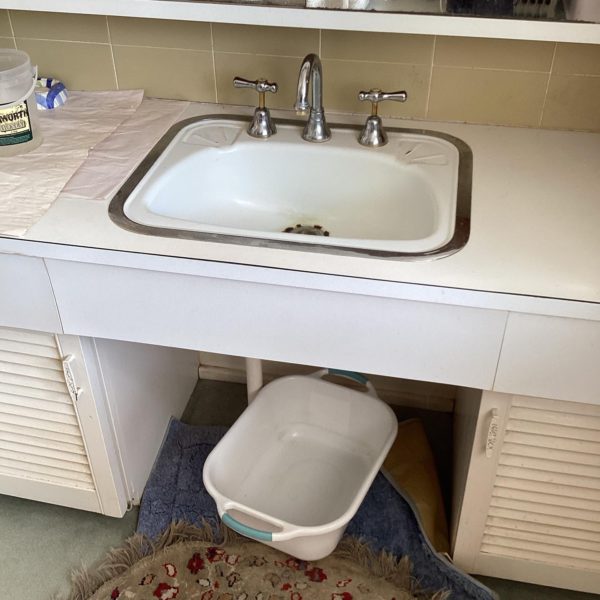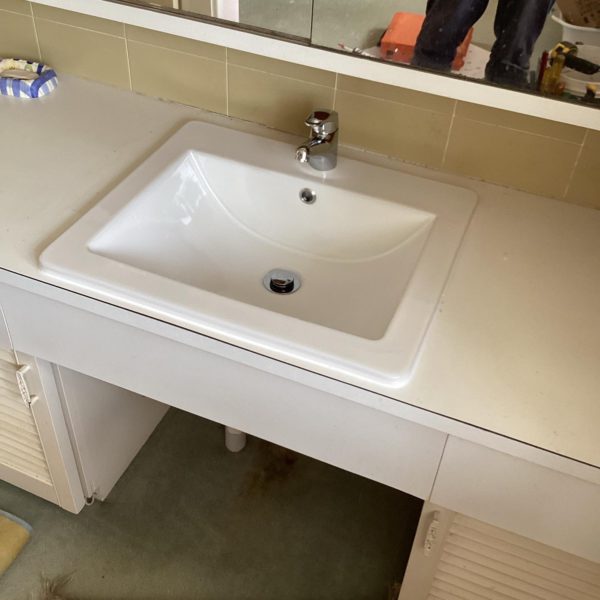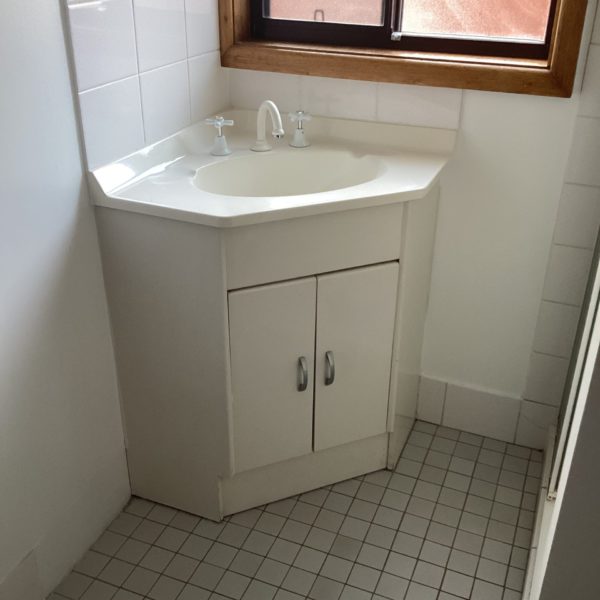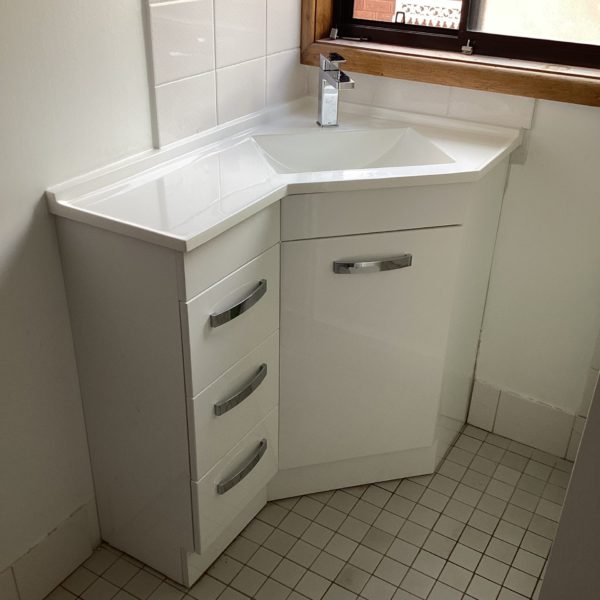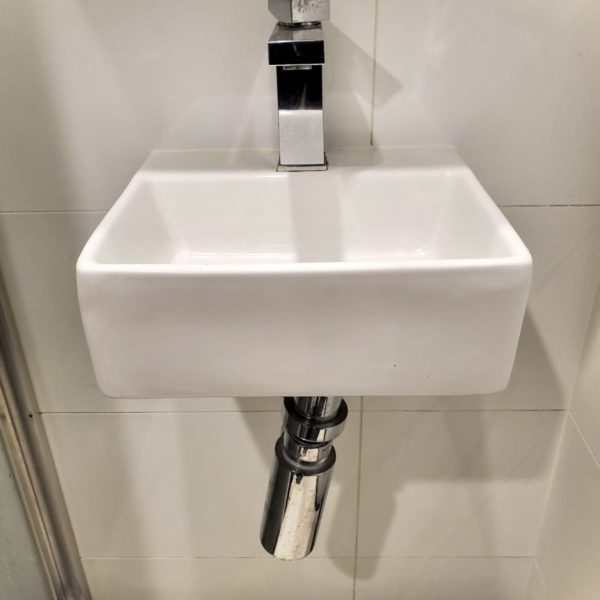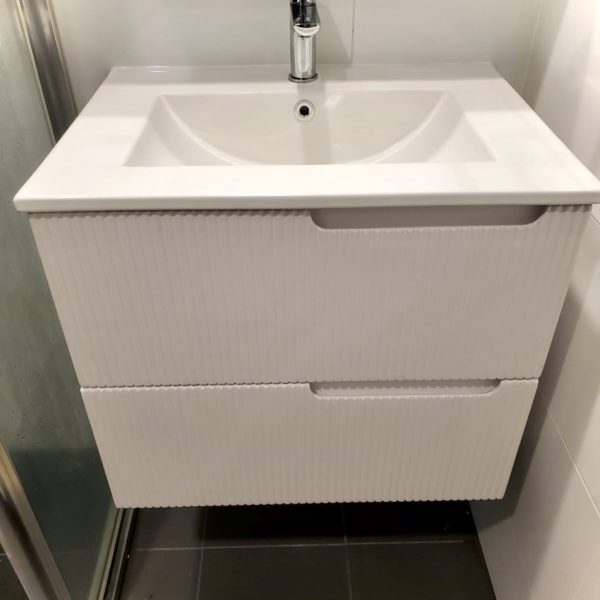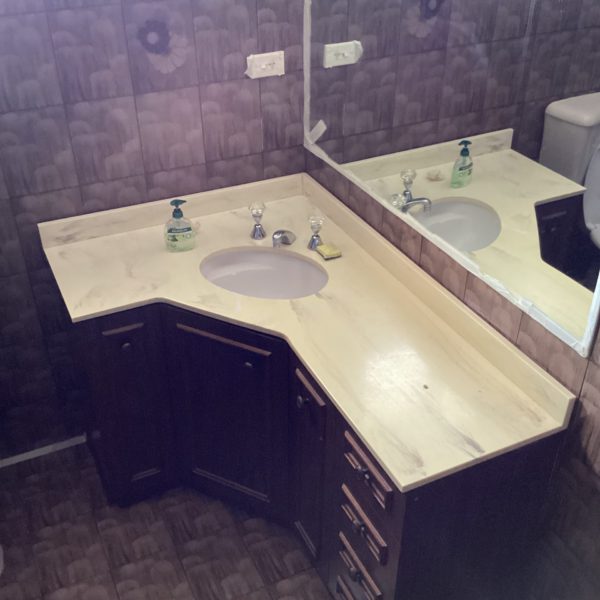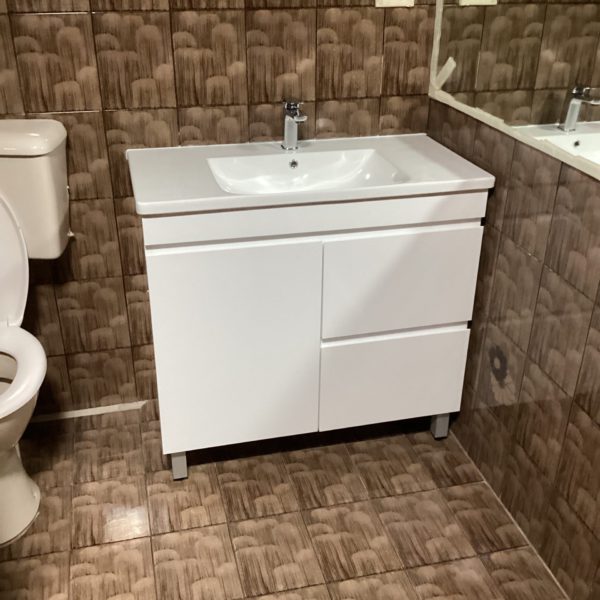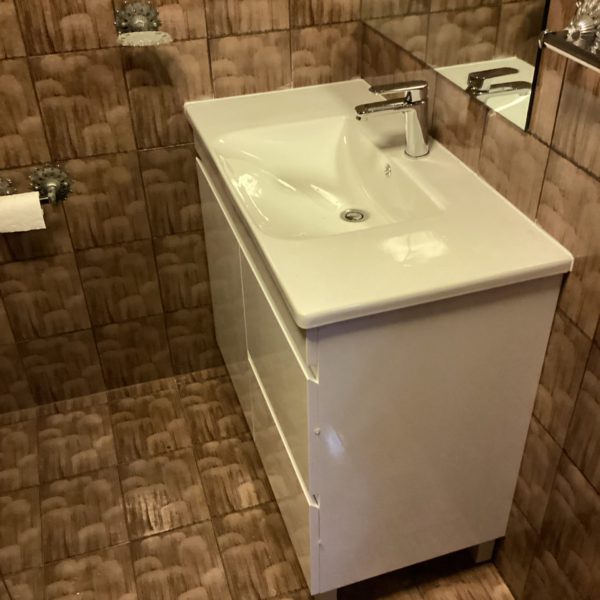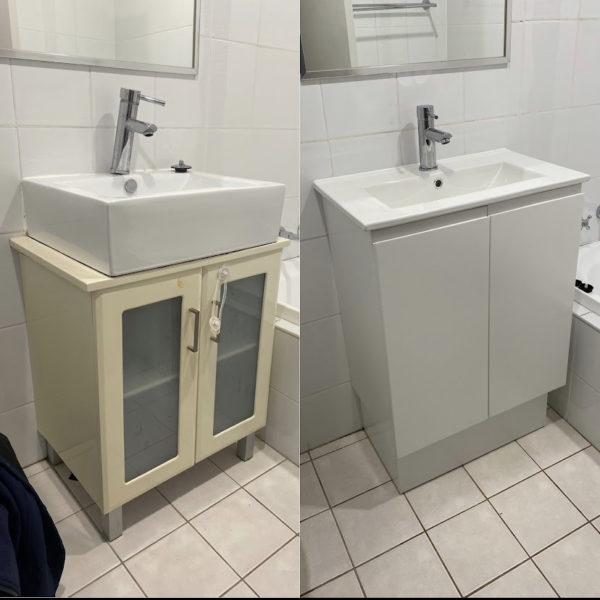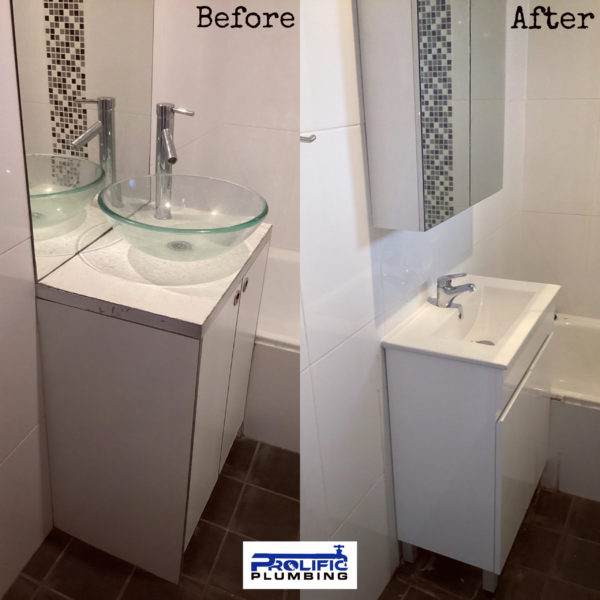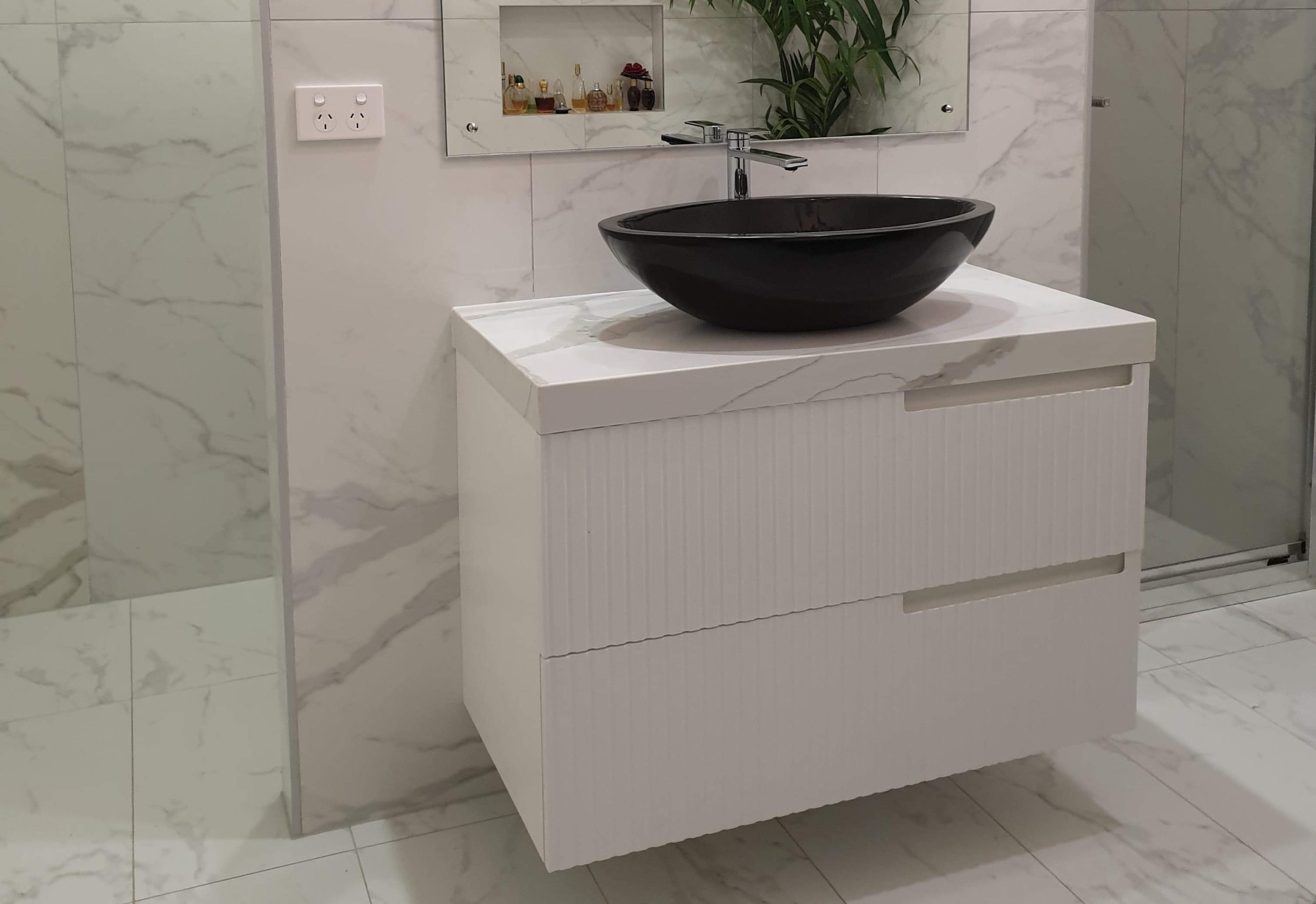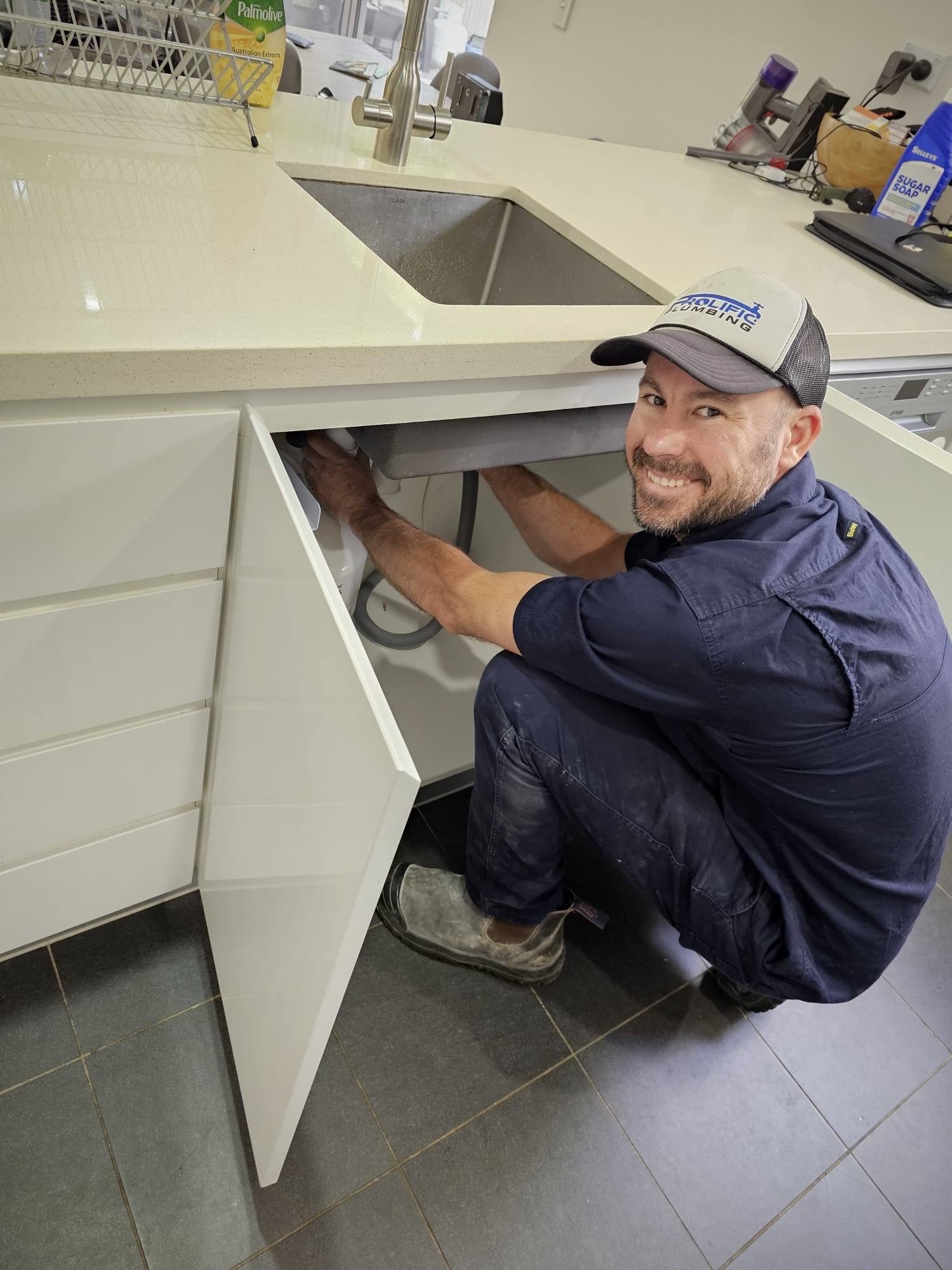- Clean and dry surfaces of oil, dirt and grease with turps and then Methylated Spirits. Allow to dry completely before applying silicone.
- Using silicone to fix the vanity top onto the cabinet allows wiggle room. Once it’s completely dry, it won’t move.
- When first applying product, extrude a small amount onto a piece of scrap material to ensure a smooth continuous flow of silicone sealant.
- Use a spatula dipped in detergent and water to tool off the sealant.
Some other factors to consider when fixing your bathroom vanity
Faucets
When considering a faucet to use for bathroom vanity you will need to look at some factors, such as the opening of the faucet, the extra features you want, the size of your bathroom, and your budget. We have several types of faucets, we have single-hole faucets, widespread mounts, wall mount faucets, and center-set faucets. If you are replacing an existing faucet with a new one or installing a completely new sink ensemble, be sure to use the perfect type of faucet for the opening in your sink. Let’s discuss the type of faucets.
Single-hole faucets
Single-hole faucets combines the balance of hot and cold water in a central control system, it has one handle, it is better than its double handle counterpart because it prevents burns since even if the temperature is at the highest, a little volume of cold water will mix with it to give a desirable temperature. The single-hole faucet uses two mechanisms: the turn-around valve and the pull-out valve.
The Turn-Around Valve
The Turn-Around Valve uses a long rubber tube, in the rubber tube there are two smaller tubes 1 mm apart, they contain the cold and hot water separately, the end of the smaller tubes has a rectangular opening to the exterior. When the faucet is off there is no water movement in the smaller tubes, by turning the faucet handle, you move the seal that stops water from flowing into the cold-water tube, this causes chilly water to flow from the shower. As you continue to turn the handle, the hot water seal also opens which results in mixing the hot water and cold water, the further you turn the hotter water is added putting you at the mercy of your thermostat.
The Pull-Out Valve
The mechanism of the pullout valve is simple, the handle is attached to a metal rod which is attached to another tube made from plastic, the plastic tube contains hot and cold water, the far end of the plastic tube has two openings, one for hot water while the other for cold water. By turning the handle either to the left or the right you will increase the hole overlap for one of the tubes, either the hot water or cold water, and reduce the hole overlap in the other.
so when picking your single-hole faucet either the turn-around valve or the pull-out valve, choose something you will be comfortable with. We have different faucets sizes, colors, and designs, when installing your bathroom vanish, make sure you consider using a facet with a beautiful texture, size, and design.
Sink Drain Assembly
When using a bathroom vanity, we need to consider water drainage, there has to be a system that will carefully convey water out of the basin and make sure the rate at which the sink drain the water is optimum to avoid water from filing to the brim and pouring on the floor, nobody wants that right? A sink drainer also prevents junks from slipping into the sink and blocking drains that lead the water to the sewer system, which can cause plumbing issues.
A sink drain is usually stainless steel with holes in them or meshes which is used as a cover at the bottom of the sink, where the water goes to the exterior. This is important because the type of sink drain you choose to use will determine if you will suffer plumbing issues in the future or not.
When choosing a sink drain, we need to pick the sink drains that are easy to install and something with very little porosity.
Water supply tube
The water supply tube is a very important material for bathroom vanity installation. They convey water to the exterior. A very good quality supply tube is needed in order not to face plumbing issues. In the future, selecting the supply tube with the favorable material is essential for uninterrupted water delivery. The following are materials used in water supply pipes.
First, we have copper pipes, they are most commonly used for delivering hot and cold water, they work in both underground and above-ground applications, they are ideal for bathroom vanities.
Second, we have PVC, PVC stands for polyvinyl chloride, PVC is ideal for cold water distribution but its not ideal for hot water because it can melt under high temperature, in many houses, PVC delivers cold water while CPVC is used for hot water, let’s talk about CPVC.
CPVC stands for chlorinated polyvinyl chloride, this kind of pipe can withstand heat of about 82.2-degree Celsius so it’s used for both cold and hot water.
Finally, we have PEX, which stands for cross-linked polyethylene. It has high resistance to cold and hot temperatures. Since it’s ideal for both hot and cold-water distribution it is widely used in homes, it also has a very interesting feature, it has a lifespan of about 50 years. PEX has widely replaced copper and other plastics used in conveying water, and the funniest aspect is that they are cheaper and easy to transport, this makes PEX the most ideal water supply tube.
Silicone caulk
A silicone caulk is one of the best caulks for bathroom vanities because of its waterproof property, it can be used to seal part of the vanities that can be joined together by hammering a nail through it.
There are a lot of different things to consider when installing your bathroom vanity and it is advisable you leave it for the professionals else you could end up doing a bad job.

